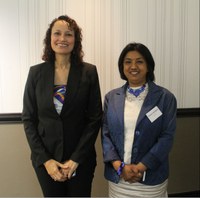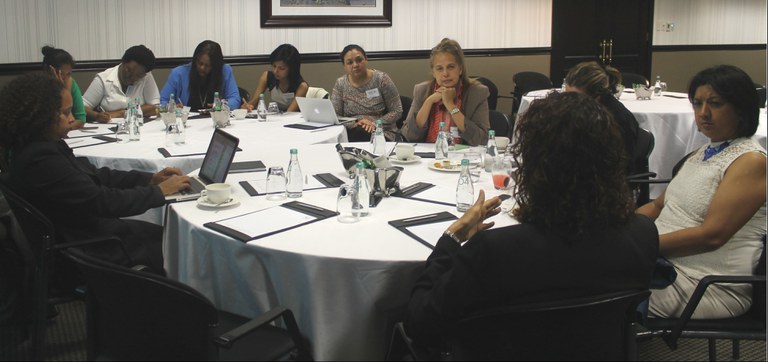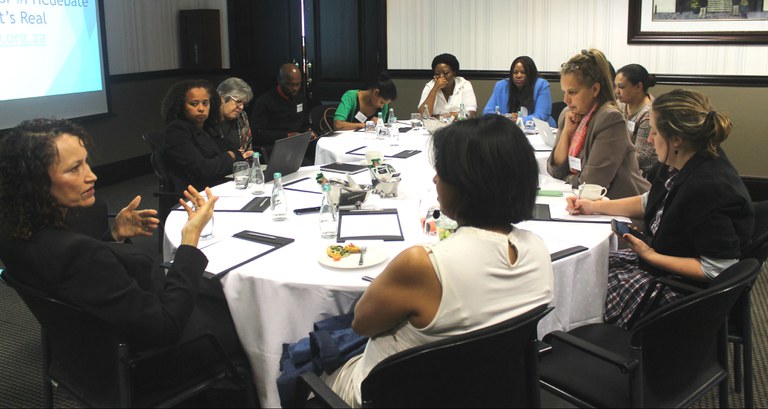
Primary Health Care still in sick bay but showing signs of improvement

Speaking at a Soul City media briefing today (FYI: Tuesday, 23 September 2014), Deputy Director-General for primary health care in the National Department of Health, Jeanette Hunter, acknowledged “we are ineffective” in terms of putting in place the processes to ensure clinics are operating optimally.
She said the department had defined what an “ideal clinic” would look like and were piloting the prototype in 100 clinics. The ideal clinic had 10 components (such as whether there was signage to the clinic or the operating hours were posted outside and the nurse greeted you with a smile), which were broken down into 26 sub-components that were further broken down into 105 elements.
Hunter said the government wanted to achieve “70% of the quality that we want” by the time its term ends in 2019. “We’ve set the objective to turn all our 3000 and odd clinics into ideal clinics. So if all goes well in five years, we will be 70% of where we want to be,” she said.
But she acknowledged there were many challenges including poor staff morale and bad attitudes, HR issues and a supply chain which she conceded was “just not working”.
Hunter admitted the country had “slid backwards” in terms of the equipment it was sourcing. “We buy substandard equipment. We do have a problem with the specification of equipment. Together with my colleague we have started to address that,” she said.
Another big problem – and the item that would be addressed after all the environmental and structural issues were dealt with – was human resources which she said would “take the longest time” to fix. The DOH considers it a priority to first improve the working environment for health workers so they are not working in facilities that are unclean, unsafe and lacking essential drugs and sufficient personnel, before addressing issues such as health worker attitudes which patients often complain about.
To address the shortage of health care professionals, increasing numbers of doctors are being trained at universities, more students are being sent to Cuba for medical training and the nursing colleges have been reopened. But the country was still facing a shortage of health care professionals and needed to find sustainable solutions.
She said one of the initiatives to address this – the co-opting of GPs in private practice to work in the public sector – was slowly gaining traction. While the government had called for 600 GPS, it had managed to lure 160 GPs from the private sector who were now working at 10 pilot sites. Hunter said the initial call for 600 GPs had “not been well-informed, again highlighting that in government we tend to set unrealistic targets” and that the government only needed around 220. She said the department had 369 doctors on its books but they were not all available when needed.
But she acknowledged it had been a slow process. “In the first year it did go slow, they were complaining about our infrastructure, the lack of communication, nurses being very rude and that the rate we were offering them was too low. That was the reason for the slow uptake. This response actually sparked the ideal clinic process,” said Hunter. “This is what got us going. Our infrastructure got going … doctors started seeing these changes and they started coming in.” She said the department had since got the go-ahead from Treasury to appoint dentists and speech and hearing therapists.
Addressing poor staff morale and unprofessional conduct of health care workers, Hunter admitted, “I’m too ashamed to talk about nurses attitudes”.
“Before we talk about nurses’ attitudes, you must fix the environment, give them a pleasant working environment and give them a tea room,” she insisted.

Hunter said “health workers at the clinics often get the short end of the stick but we fail them at district, provincial and national level by not giving them the tools”.
But she conceded that moonlighting – where workers do paid work outside the system – was a real problem.
Hunter insisted all workers in the system – from the cleaners to the CEOs of hospitals – needed to get a job description and needed to be properly trained, managed and disciplined so they could be held to account.
“Cleaning is a specialised skill,” said Hunter. “We should have a job description for the cleaner, and have trained the cleaner so he can perform according to the job description and he has the tools. That’s what we are sitting with, it’s not just cleaners, but every single worker including health professionals have to have a job description and be held accountable for the tasks they have been allocated. We have to start managing it like that. This is the only way we will be able to turn poorly-performing clinics into excellently run clinics and keep it like that.”

Hunter said the department had adopted the WHO’s Workload Indicators of Staffing Need (WISN) process to determine the ideal workload of health care workers, especially nurses. KwaZulu-Natal had already started the WISN process and were engaging on the issue with unions as their support for this kind of performance management is crucial she indicated.
